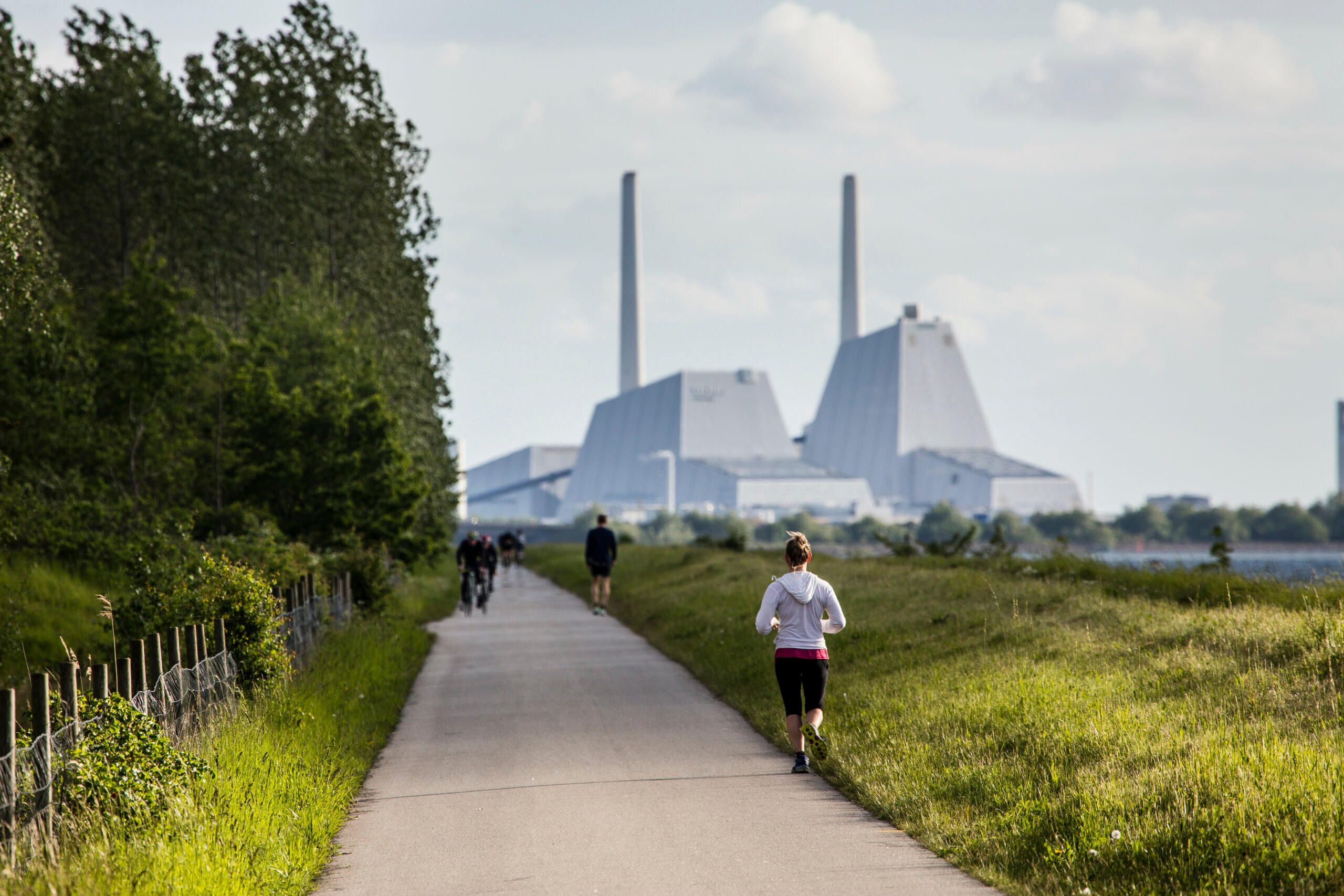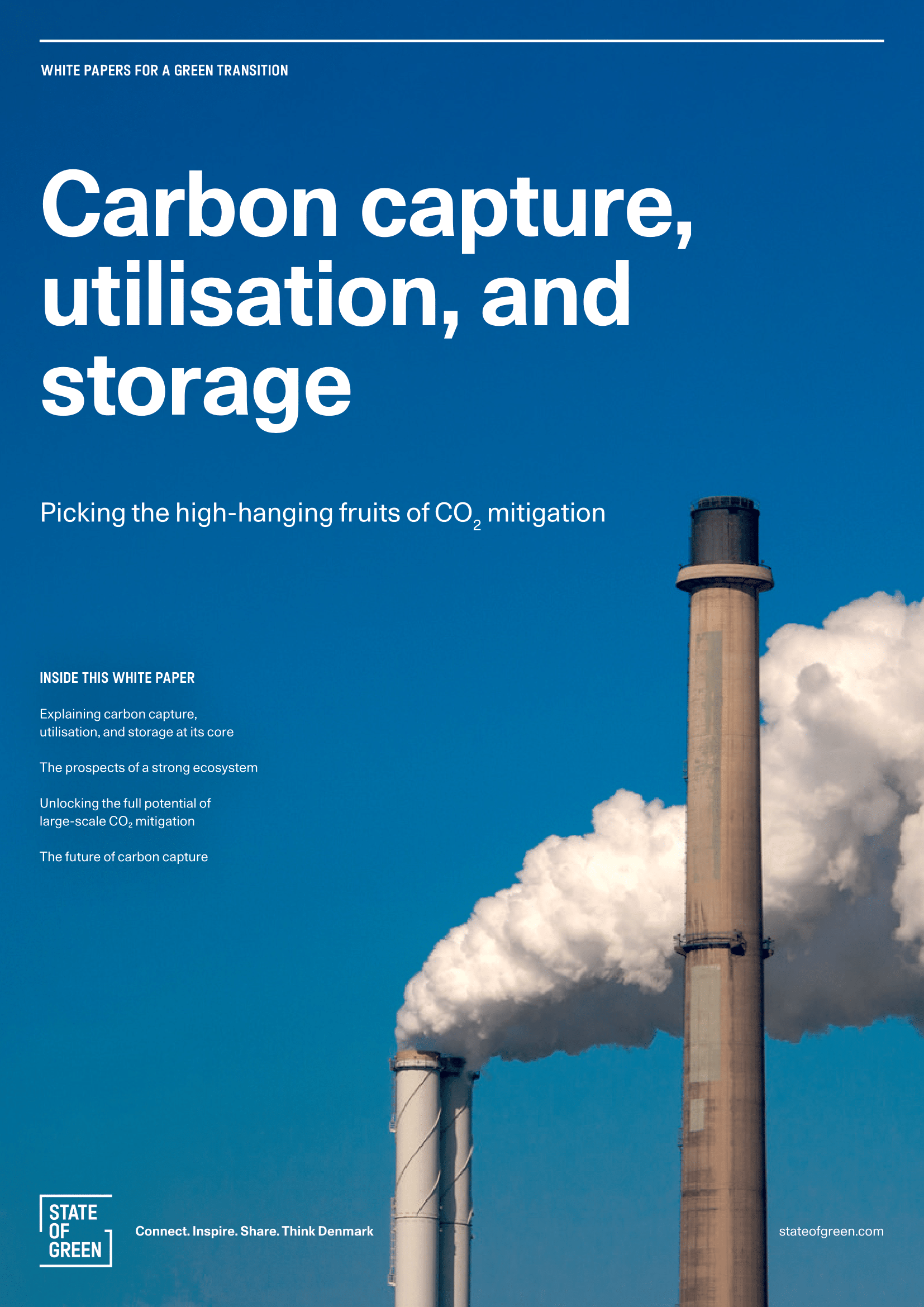White paper: Carbon, capture, utilisation, and storage
Want to learn more about how Danish initiatives within carbon capture, utilisation and storage? Download our white paper.
Download nowNews
Carbon capture, storage and utilisation
Green hydrogen
Power-to-x



Want to learn more about how Danish initiatives within carbon capture, utilisation and storage? Download our white paper.
Download nowIn a host of climate-mitigating technologies, carbon capture and storage (CCS) is one of several methods to reach global climate targets. In Denmark, the industry is already underway. Amongst others, three large-scale storage permits have been granted, and the first international agreement on storage in Denmark has been signed.
To build on the momentum, a new plan presented on 20 August by Lars Aagard, the Danish Minister for Climate, Energy, and Supply, seeks to accelerate the development of capture and storage of CO2 in Denmark even further. The proposed plan aims to ensure clarity in the industry while speeding up the process for capture and storage.
Under the proposed plan, Danish the government outlines a structure for the upcoming CCUS tenders totaling EUR 3.6B (DKK 27B). Rather than dispersing the funds into smaller portions, the proposal consolidates these amounts into two substantial allocations, each respectively accounting for a minimum of 0.9 million tonnes up to at least 1.4 million tonnes of CO2 annually. This will mean that more actors can bid, thus creating greater certainty that carbon capture and storage can deliver its share to meet the CO2 reduction targets. At the same time, plans are being made demanding the projects to be in full operation as early as 2029 instead of 2030.
“The fight against climate change in Denmark, Europe, and the rest of the world requires us to invest in many areas and carbon capture is one of the supporting beams when we have to build all the way up to achieving the climate goals. Therefore, we are also pulling the requirement for full capture closer from 2030 to 2029 to get more CO2 from the air and into the underground faster. The plan must also ensure a clearer framework for the growing industry to ensure the Danish CCS industry’s ability to increase in scale while reducing prices. It may well be that it’s geeky, but it’s in the geekery that things happen,” says Lars Aagard, the Danish Minister for Climate, Energy, and Supply Minister.
Related news: Denmark grants first full-scale CO2 storage permits in the Danish North Sea
For future storage licenses, the government proposes to continue the model with a 20% state ownership, which is already applicable to the three existing licenses. This provides the Danes with a share in the profits when a common underground is made available.
“With this initiative, we are paving the way for our talented Danish companies. By pooling the resources and creating clear framework conditions for carbon capture and storage, we pave the way for a strong Danish industry that not only reduces our climate footprint, but creates growth as well as jobs. We are determined to use our skills and innovation to lead the way in the green transition,” says Morten Bødskov, the Danish Minister for Industry, Business and Financial Affairs.
Additionally, the plan establishes framework parameters for the industry concerning ownership and the regulatory aspects related to CO2 transportation via pipelines. This initiative builds upon the suggestions put forth by the CCS Clusters, a sub cluster of the five Danish Clusters focused on the development and production upscaling of green technologies within the areas of CCS, carbon capture utilization (CCU), Power-to-X, iotechnology, water-technology and energy-islands. One of the notable measures involves the government’s intention to broaden the current regulations governing CO2 transportation. This expansion will encompass all modes of CO2 transport, holding particular significance for transporting CO2 to PtX facilities and for transporting CO2 destined for offshore storage via ports.
To assist in facilitating this, the government will expand the existing rules for the transport of CO2 to include all forms of carbon transport, which is particularly important for the transport of CO2 for use in power-to-X facilities and for CO2 that must be shipped via ports for storage offshore.
Get inspired: From chimney pollution to tomato cultivation
For more information visit the Danish Ministry of Energy, Utilities, and Climate’s webpage. (Danish article)